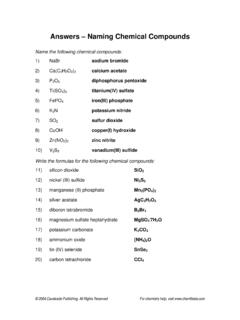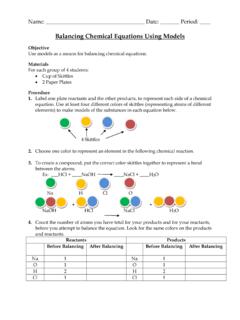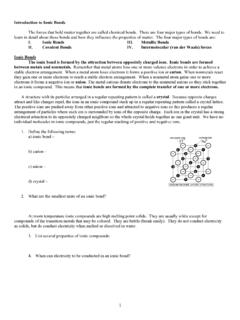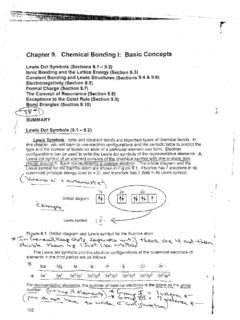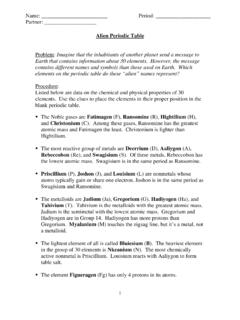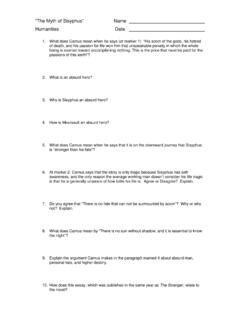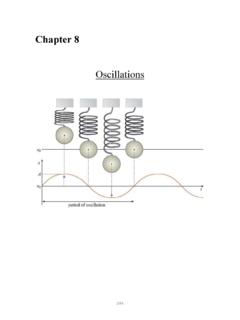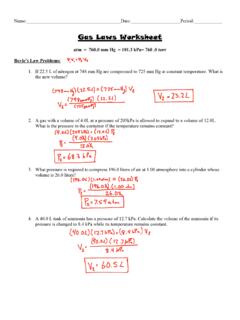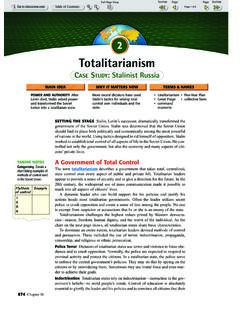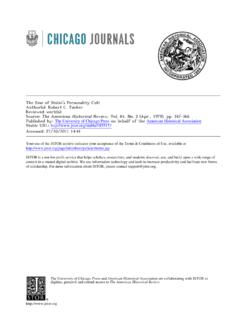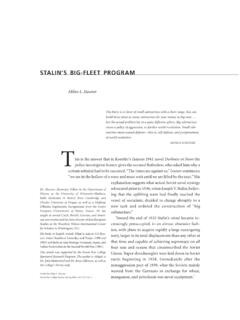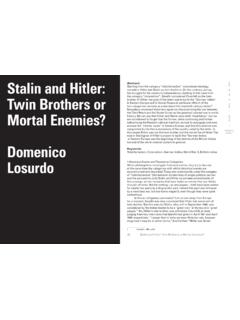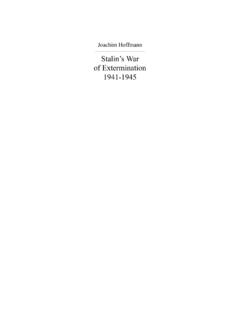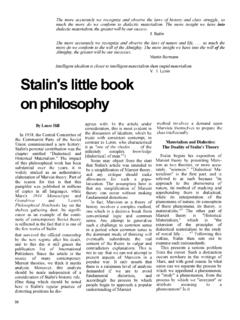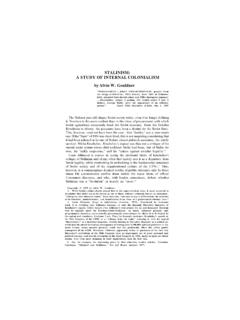Transcription of Evaluating Joseph Stalin - New Providence School District
1 Name: Date: HWS pd. Mrs. Hornstein Evaluating Joseph Stalin (Adapted from Document-Based Assessment for Global History, Walch Education) Historical Context: Joseph Stalin is one of the most controversial leaders in world history. Between 1928 and 1941 he transformed the Soviet Union into a modern superpower. His rule is characterized by collectivized agriculture, rapid industrialization, great purges, and the extermination of opposition. Today we will evaluate the rule of Stalin in the Soviet Union, taking into consideration the changes made and the methods used. Directions: The following documents provide information about Stalin and the Soviet Union. Examine the documents carefully, and answer the questions that follow.
2 As you analyze the documents, take into account both the source of the document and the author s point of view. Document 1 Stalin launched his first Five-Year Plan in 1928 by setting up a planned, or command, economy. In this speech, Stalin speaks of his plan to his people. To slow down would mean falling behind. And those who fall behind are beaten. But we do not want to be beaten! One feature of the old Russia was the continual beatings she suffered for falling behind, for her backwardness.. So you want our Socialist fatherland to be beaten? .. If you don t want this, you must end our backwardness. You must develop a real Bolshevik tempo [speed] in building our Socialist economy. There is no other road. We lag behind the advanced countries by fifty to a hundred years.
3 We must make good this distance in ten years. Either we do it, or we shall be crushed. A) What is Stalin trying to do in his speech? B) What method is he using to accomplish his goal? Document 2 The Buildup of the Soviet Economy in Industry under Stalin s Five Year Plans The following table gives some idea of what progress was made when the base line figure is 1927 - before the five year plans. The target for both plans is in brackets. 1927 (before 5 yr plan) 1932 1937 Coal 35 million tons 64 mt (75 mt target) 128 mt (152 mt target) Oil 12 million tons 21 mt (22 mt target) 29 mt (47 mt target) Iron Ore 5 million tons 12 mt (19 mt target) unknown Pig Iron 3 million tons 6 mt (10 mt target) 15 mt (16 mt target) Steel 4 million tons 6 mt (10 mt target) 18 mt (17 mt target) mt = millions of tons A) What is the goal of this Five-Year Plan?
4 B) For what specific areas were goals set? C) What does the chart show about the reality of Soviet industrial production? Document 3 In this excerpt from a 1929 speech delivered by Stalin , he explains the collectivization policy and the need to eliminate the kulaks (wealthy farmers). The solution lies in enlarging the agricultural units .. and in changing the agricultural base of our national economy..the Socialist way, which is to set up collective farms and state farms which leads to the joining together of the small peasant farms into large collective farms, technically and scientifically equipped, and to the squeezing out of the capitalist elements from agriculture.. Now we are able to carry on a determined offensive against the kulaks, to break their resistance, to eliminate them as a class and substitute for their output, the output of the collective farms and state farms.
5 A) According to Stalin , why and how must agricultural production be increased? B) Why must the kulaks be eliminated? Document 4 A) How does this map show an effect of the collectivization of agriculture programs? Document 5 This excerpt, from Forced Famine in the Ukraine: A Holocaust the West Forgot by Adrian Karatnycky, was printed in The Wall Street Journal, on July 7, 1983. Today, reliable academic estimates place the number of Ukrainian victims of starvation at million to 7 million.. The famine was in part the by-product of Stalin s relentless drive to collectivize Soviet agriculture. The famine was a clear result of the fact that between 1931 and 1933, while harvests were precipitously declining, Stalin s commissars continued to .. confiscate grain.
6 Peasants were shot and deported as rich, landowning kulaks .. While the drive to collectivize agriculture was a wide-ranging phenomenon common to the entire , only in the Ukraine did it assume a genocidal character. Indeed there can be no question that Stalin used the forced famine as part of a political strategy whose aim was to crush all vestiges of Ukrainian national sentiments. A) According to this author, what were two explanations for the elimination of between and 7 million Ukrainians between 1932 and 1933? Document 6 In contrast to prior documents, this excerpt from The Land of Soviets, published in the , gives another perspective of the collectivization. The radical step forward by the majority of the peasantry towards a collective way of life was taking place against the backdrop of a bitter struggle between Soviet power and the kulaks.
7 The [kulaks] stooped to all possible means to wreck the collectivization campaign. They murdered collective farm activists and Party and government officials sent to the villages to help the peasants; they set fire to collective farm buildings; they poisoned the cattle and destroyed farm machinery.. The Soviets had the right to banish them from their villages.. The exploiter class the rural bourgeoisie was finally abolished.. A) In contrast, how does the Soviet author explain the actions taken against the kulaks? Document 7 This excerpt, from The Land of the Soviets, published in the , describes the results of the Five-Year Plans. The fulfillment of the first and second Five-Year Plans strengthened the Soviet Union s economic position and turned it into a powerful industrial state.
8 In 1937 the industrial output of the USSR was times larger than in 1913. The rate of industrial growth in the USSR considerably exceeded that of the capitalist countries. By 1937 the Soviet Union was the first country in Europe and the second in the world in the volume of industrial production.. Socialist industrialization was accompanied by the rapid growth of the working class, and made it possible to liquidate unemployment. In 1940 there were 9,971,000 industrial workers, which was nearly three times more than in 1928. The working class was also changing: its efficiency, technical and cultural levels were growing rapidly. A) According to the Soviet author, what were the results of the Five-Year Plans? Document 8 In this excerpt, the French ambassador to the Soviet Union described the public trials that were part of the great purges of Stalin .
9 I personally attended the second and third Moscow trials, those of 1937 and 1938.. Pyatakov [another defendant] arose .. confessed .. to a number of crimes. Did these confessions carry any share of truth? It is possible that the accused were hostile to Stalin s regime.. But the lessons they recited must have been forced from them .. it is more likely that the GPU [secret police] touched each at his weak point. It is also probable that the accused gave in to some form of pressure.. Some would give in to save their families, others in the hope of saving their own lives. A) According to the French ambassador, what happened at the trials? Document 9 A) Describe the effects of the purge on the strength of the Red Army. Document 10 A Soviet poster was used to glorify Stalin .
10 It read, Long live the great Stalin ! A) How did propaganda posters help Stalin achieve his goals? Document 11 In this excerpt from his 1936 book, Revolution Betrayed, Leon Trotsky examines the state of the Soviet Union. The bureaucracy [of the Soviet Union] not only has not disappeared, yielding its place to the masses, but has turned into an uncontrolled force dominating the masses. The army not only has NOT been replaced by an armed people, but has given birth to a privileged officers caste, crowned with marshals, while the people, the armed bearers of the dictatorship, are now forbidden in the Soviet Union to carry even nonexplosive weapons. With the utmost stretch of fancy it would be difficult to imagine a contrast more striking than that which exists between the scheme of the workers state according to Marx, Engels and Lenin, and the actual state now headed by Stalin .
